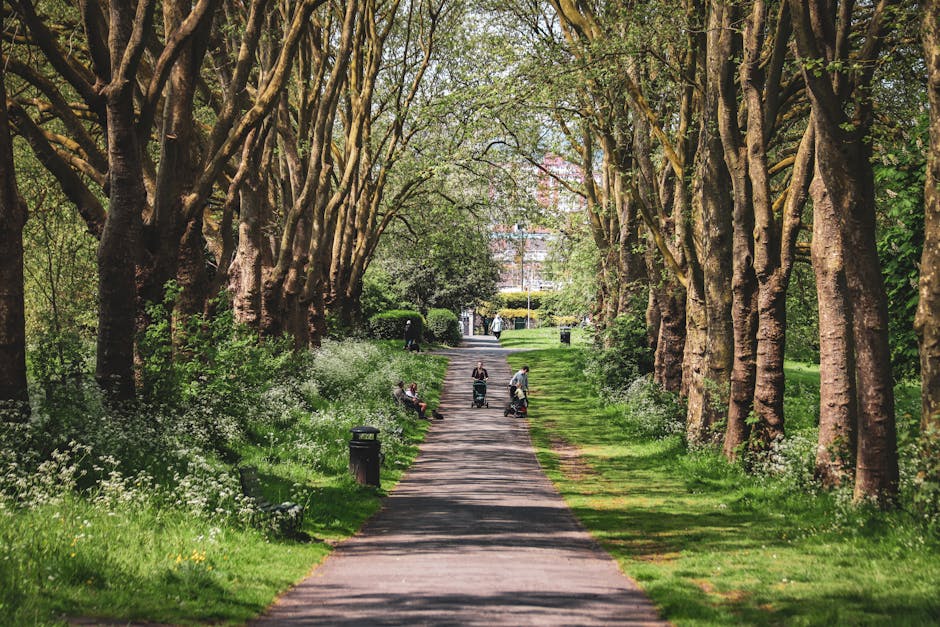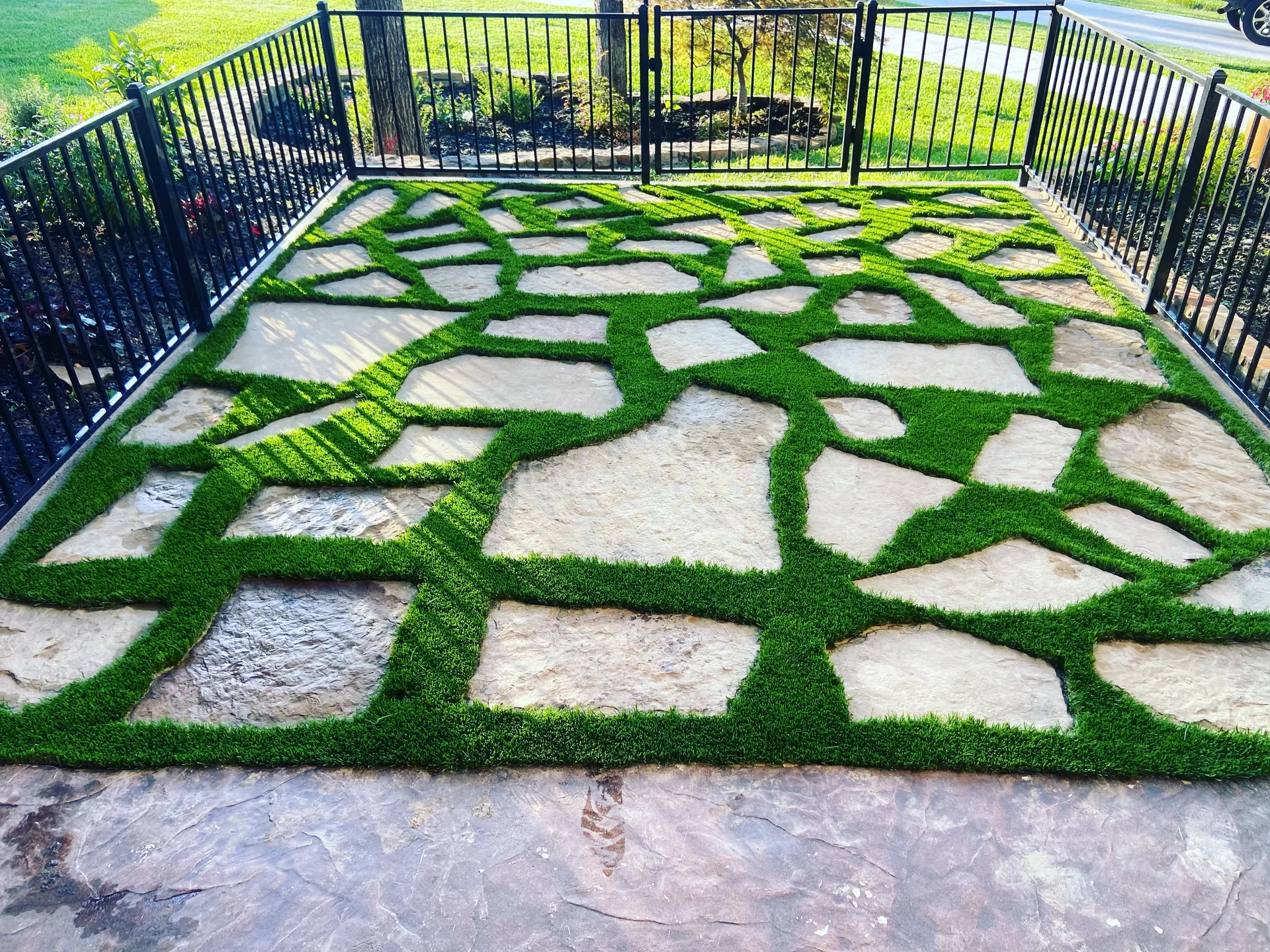
The Importance of Family-Friendly Outdoor Spaces
Designing family-friendly outdoor spaces holds significance for the well-being of all family members. These spaces offer multiple benefits, including the promotion of physical activity, mental relaxation, and providing a safe environment for children to play. By creating an outdoor area that caters to all age groups, families can foster stronger bonds and encourage a healthy lifestyle.
Key reasons why family-friendly outdoor spaces are important include:
- Enhanced Physical Health: Outdoor activities enable children and adults to engage in physical exercise, which can reduce the risk of obesity and other health-related issues. Regular physical activity is also essential for improving cardiovascular health and muscle strength.
- Mental Well-being: Exposure to nature and outdoor environments can significantly reduce stress and anxiety. Having a dedicated space to enjoy the outdoors can promote relaxation and a positive mental state.
- Social Interaction: Family-friendly spaces encourage social interaction among family members and friends. These interactions contribute to emotional well-being and social development, particularly for children.
- Safety: Controlled and designed outdoor areas can ensure the safety of children by providing a secure environment for them to play. Unlike unsupervised park areas, family-friendly spaces can be tailored to meet the safety needs of children.
- Environmental Awareness: Children who spend time outdoors are more likely to develop a connection with nature and an appreciation for the environment. This early exposure can foster a lifelong respect for nature and environmental conservation.
Impact on Family Dynamics
Creating a family-friendly outdoor space can positively impact family dynamics by providing a common area for family members to spend time together. This can lead to improved communication, stronger familial bonds, and a shared sense of enjoyment. The table below summarizes the impact on various aspects of family life:
| Aspect | Impact |
|---|---|
| Communication | Increases opportunities for family discussions and bonding |
| Physical Activity | Encourages active lifestyles for both children and adults |
| Relaxation | Provides a tranquil space for relaxation and mental well-being |
| Safety | Offers a secure environment for children to play |
| Environmental Awareness | Fosters a connection with nature and promotes conservation efforts |
In conclusion, the importance of designing family-friendly outdoor spaces cannot be overstated. Such spaces enhance physical and mental well-being, encourage social interactions, ensure safety, and promote environmental awareness. These benefits collectively contribute to the overall quality of life for families.
Benefits of Synthetic Grass for Play Areas
Synthetic grass has become an increasingly popular choice for play areas due to its numerous advantages. These benefits span across safety, durability, maintenance, environmental impact, and aesthetics. Understanding these advantages can help in making informed decisions when designing family-friendly outdoor spaces.
Safety
Non-Toxic Material: Modern synthetic grass is made from non-toxic, lead-free materials, making it safe for children and pets.
Even Surface: Unlike natural grass, synthetic grass provides an even playing surface, reducing the risk of trips and falls.
Shock Absorption: Many synthetic grass products come with shock-absorbing pads that can cushion falls, making it a safer option for play areas equipped with playground equipment.
Durability
Weather Resistance: Synthetic grass is designed to withstand various weather conditions, including heavy rain, high temperatures, and UV exposure. This makes it a robust option for year-round use.
Wear and Tear: High-quality synthetic grass can endure high levels of foot traffic without becoming patchy or uneven, which is ideal for active play areas.
Low Maintenance
No Mowing: One of the most significant advantages of synthetic grass is that it does not require mowing, saving time and effort.
No Watering: Synthetic grass does not need watering, which conserves water and reduces utility bills.
Infrequent Cleaning: Maintenance generally involves occasional rinsing and brushing to remove debris and keep the fibers upright and looking fresh.
Environmental Impact
Water Conservation: As synthetic grass does not require watering, it helps in conserving water, making it an environmentally friendly option, particularly in areas prone to drought.
No Pesticides: The use of synthetic grass eliminates the need for chemical fertilizers and pesticides, contributing to a healthier environment.
Aesthetic Value
Consistent Appearance: Synthetic grass maintains a vibrant green color and uniform texture throughout the year, regardless of weather conditions.
Customization: It can be customized to fit various landscape designs, offering flexibility in creating aesthetically pleasing play areas.
Overall, the benefits of synthetic grass make it an excellent choice for family-friendly outdoor spaces, providing a safe, durable, low-maintenance, environmentally friendly, and aesthetically pleasing option for play areas.
Design Principles for Safe and Fun Play Zones
When designing family-friendly outdoor spaces, establishing safe and fun play zones is crucial. Several design principles can help ensure these areas are both secure and enjoyable for children and families.
Safety Considerations
The foundation of any play area design should be safety. Here are key elements to keep in mind:
- Surface Materials: Synthetic grass is a beneficial choice due to its cushioning effect, which reduces the risk of injury from falls.
- Non-Toxic and Hypoallergenic: Ensure the synthetic grass is made from materials that do not release harmful chemicals and are allergen-free.
- Proper Installation: The grass should be installed correctly to prevent rips, tears, or uneven surfaces that could cause tripping or other injuries.
- Maintenance: Regular maintenance checks help sustain the durability and safety of the synthetic grass.
Accessibility Features
Creating an inclusive play zone involves providing accessibility features that allow all children, including those with disabilities, to enjoy the space:
- Level Surfaces: Ensure that play areas are flat and free from obstacles to accommodate wheelchairs or walkers.
- Pathways: Build wide, smooth pathways that connect different play areas for easy navigation.
- Sensory Play Items: Incorporate sensory-rich elements such as textured materials, scented plants, or musical instruments which can provide engaging experiences for children with different needs.
Interactive and Engaging Elements
To keep children entertained and active, incorporate various interactive and engaging elements within the play zones:
- Varied Play Equipment: Include swings, slides, climbing structures, and balance beams to cater to different interests and age groups.
- Artificial Turf Markings: Use colorful markings or patterns on the synthetic grass to create games such as hopscotch or mini-soccer fields.
- Shaded Areas: Install shade structures or plant trees to provide cool areas where children can take breaks from play.
- Water Features: Consider adding splash pads or misting stations that offer a fun way for children to cool down during hot days.
Natural and Aesthetic Integration
It’s significant to blend artificial materials with natural elements to maintain an appealing landscape:
- Plant Integration: Place synthetic grass alongside flower beds, shrubs, and trees to create a harmonious environment.
- Natural Borders: Use natural stones or wooden borders to separate play zones from relaxation or garden areas.
- Color Harmony: Choose synthetic grass in shades that complement the natural surroundings to avoid stark contrasts.
By considering these design principles, you can create a safe, fun, and visually appealing outdoor play environment for families to enjoy.
Creating Relaxation Areas with Synthetic Grass
Relaxation areas are essential components of family-friendly outdoor spaces, providing a haven for rest and rejuvenation. Integrating synthetic grass into these zones can significantly enhance their appeal and functionality.
Synthetic Grass and Comfort
One of the notable advantages of synthetic grass is its ability to provide a comfortable and plush surface. This material mimics the softness of natural grass, making it ideal for creating cozy seating areas, laying out picnic blankets, or simply lounging. The even surface of synthetic grass also ensures that outdoor furniture remains stable and level, adding to the comfort and usability of the space.
Low Maintenance and Durability
Synthetic grass requires minimal maintenance compared to natural grass. There is no need for regular mowing, watering, or fertilizing, which saves time and effort. Its durability makes it resistant to wear and tear from foot traffic, furniture, and weather conditions, ensuring that the relaxation area remains pristine and inviting throughout the year.
Design Elements for Relaxation Areas
Shade and Shelter
Incorporating shade structures such as pergolas, umbrellas, or canopies can enhance the usability of synthetic grass relaxation areas. These elements provide protection from the sun, allowing for more extended periods of comfort outdoors.
Comfortable Seating
- Lounge chairs and sofas with weather-resistant cushions
- Hammocks or swing chairs for a gentle swaying motion
- Picnic tables or low coffee tables for alfresco dining
Decorative Elements
Accentuating the space with decorative elements such as potted plants, outdoor rugs, and lighting can create a serene and visually appealing ambiance. Synthetic grass pairs well with various ornamental features, enhancing the overall aesthetic.
Water Features and Fire Pits
- Small ponds or fountains can add a soothing auditory experience.
- Fire pits provide warmth and a focal point for evening gatherings.
Environmental Considerations
Using synthetic grass in relaxation areas can contribute to environmental sustainability. By eliminating the need for watering and chemical treatments, synthetic grass helps conserve water and reduce the use of potentially harmful fertilizers and pesticides. Moreover, its long lifespan reduces the frequency of replacements, thereby minimizing waste.
Accessibility and Inclusivity
Another benefit of synthetic grass is its ability to create accessible and inclusive relaxation areas. Its even surface can accommodate wheelchairs and mobility aids, making the space more accessible for all family members and guests. Additionally, it reduces the risk of tripping and injuries, promoting a safe environment for children and elderly individuals.
In conclusion, integrating synthetic grass in relaxation areas of family-friendly outdoor spaces offers numerous benefits, from comfort and low maintenance to environmental sustainability and inclusivity. Thoughtful design elements further enhance the functionality and aesthetic appeal, making these areas true sanctuaries for rest and rejuvenation.
Achieving Aesthetic Harmony in Landscapes
When designing an outdoor space that is both functional and visually appealing, achieving aesthetic harmony is crucial. Incorporating synthetic grass into these designs can significantly enhance the overall look of the landscape while ensuring cohesion between different areas of the yard, such as play zones and relaxation spots.
Blending Synthetic Grass with Natural Elements
One effective way to achieve aesthetic harmony is by blending synthetic grass with natural elements like trees, plants, and flowers. The contrast between the lush green synthetic grass and the vibrant colors of natural flora creates a visually pleasing environment. Additionally, synthetic grass provides a uniform backdrop that accentuates the beauty of other landscaping elements.
Consistent Color and Texture
Another key aspect of aesthetic harmony is maintaining consistent color and texture throughout the landscape. Synthetic grass is available in various shades of green and different blade lengths, allowing homeowners to select options that best match their existing natural grass or other outdoor features. Here are some common varieties:
| Grass Type | Features |
|---|---|
| Short Pile | Ideal for high-traffic areas due to its durability |
| Medium Pile | Provides a balance between comfort and resilience |
| Long Pile | Offers a plush, natural look and feel |
Incorporating Hardscaping
Hardscaping elements such as pathways, patios, and retaining walls can also be integrated with synthetic grass to enhance the overall landscape design. Using materials like stone, wood, or composite pavers in combination with synthetic grass creates a harmonious blend of soft and hard textures.
Creating Flow Between Zones
To ensure that play areas, relaxation spots, and other zones within the yard appear cohesive, consider how each section transitions into the next. Synthetic grass can be used to create seamless borders that guide the eye and foot traffic naturally. Curved edges and defined pathways can help in delineating different sections while still maintaining a unified aesthetic.
Minimalist and Modern Aesthetics
Synthetic grass is particularly suitable for minimalist and modern outdoor designs, where clean lines and uncluttered spaces are preferred. The low-maintenance aspect of synthetic grass complements the minimalist approach by reducing the need for ongoing yard work, thus keeping the space looking tidy and well-kept.
In summary, achieving aesthetic harmony in landscapes that incorporate synthetic grass involves a thoughtful combination of natural and synthetic elements, consistent color and texture, strategic use of hardscaping, and careful consideration of how different areas flow together. This approach creates an outdoor space that is not only functional and enjoyable but also visually pleasing.
Maintaining and Caring for Synthetic Grass
Proper maintenance is crucial to ensure that synthetic grass remains in good condition over time. Although synthetic grass requires less upkeep compared to natural grass, regular care is essential to maintain its appearance and functionality.
Regular Cleaning: One of the most important maintenance tasks is to keep the synthetic grass clean. This involves removing leaves, dirt, and other debris that may accumulate on the surface. A leaf blower, garden vacuum, or a regular broom can be used for this purpose.
Brushing the Grass: Over time, synthetic grass can become flattened due to foot traffic. Regular brushing helps to keep the grass blades upright. A stiff-bristled broom or a power brush can be used to gently brush the grass fibers, maintaining their natural look and feel.
Stain Removal: Accidental spills can happen, and it’s important to address them promptly to prevent staining. Most spills can be cleaned with a mixture of water and mild detergent. For tougher stains, products specifically designed for synthetic grass can be used. It’s crucial to avoid harsh chemicals that can damage the grass.
Weed Control: While synthetic grass is generally weed-resistant, weeds can occasionally sprout around the edges or through the drainage holes. Manual weeding or a mild herbicide can help manage this issue, ensuring that the grass remains tidy and uniform.
Pet Waste Management: Pet owners should regularly remove solid waste and rinse off liquid waste from the synthetic grass. Enzyme cleaners formulated for artificial turf can help neutralize odors and prevent bacteria buildup, keeping the area hygienic and fresh.
Inspections and Repairs: Regularly inspecting the synthetic grass for any signs of wear and tear is essential. Look for loose seams, frayed edges, or other damage. Promptly addressing these issues through proper repair techniques or professional assistance will prolong the life of the grass.
Protecting Against Heavy Objects: To avoid damage, heavy objects such as outdoor furniture should have protective bases. Avoid placing sharp or pointed items directly on the grass, as they can puncture or damage the turf.
By adhering to these maintenance practices, synthetic grass can continue to provide a safe, attractive, and durable surface for family-friendly outdoor spaces. Regular care ensures that play areas, relaxation zones, and aesthetically harmonized landscapes remain inviting and functional for years to come.


